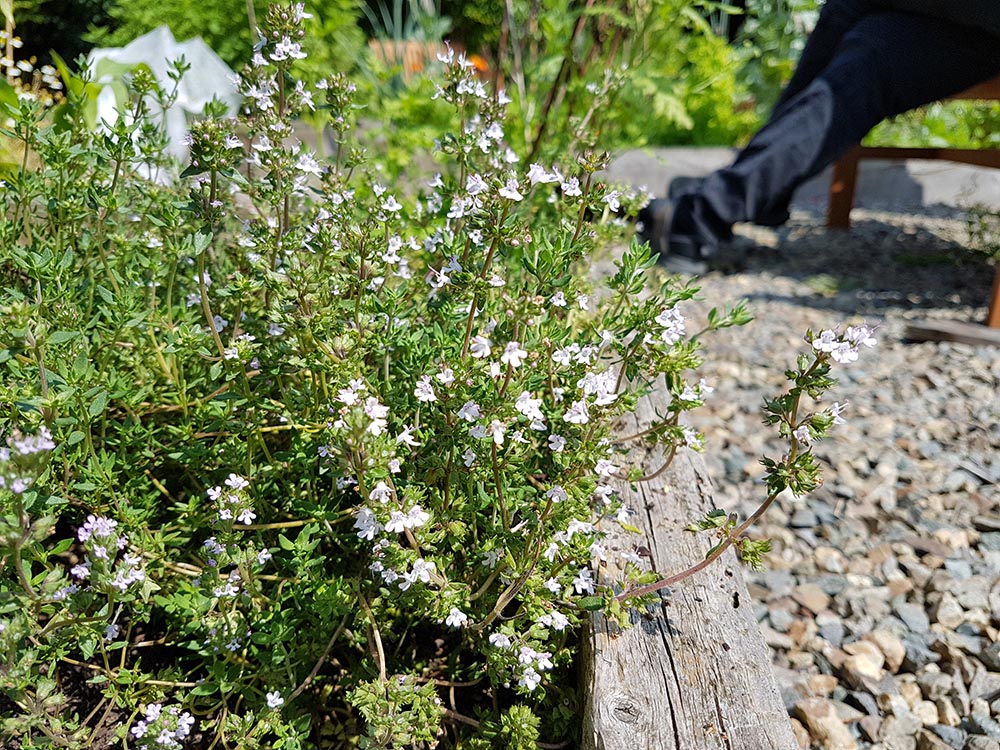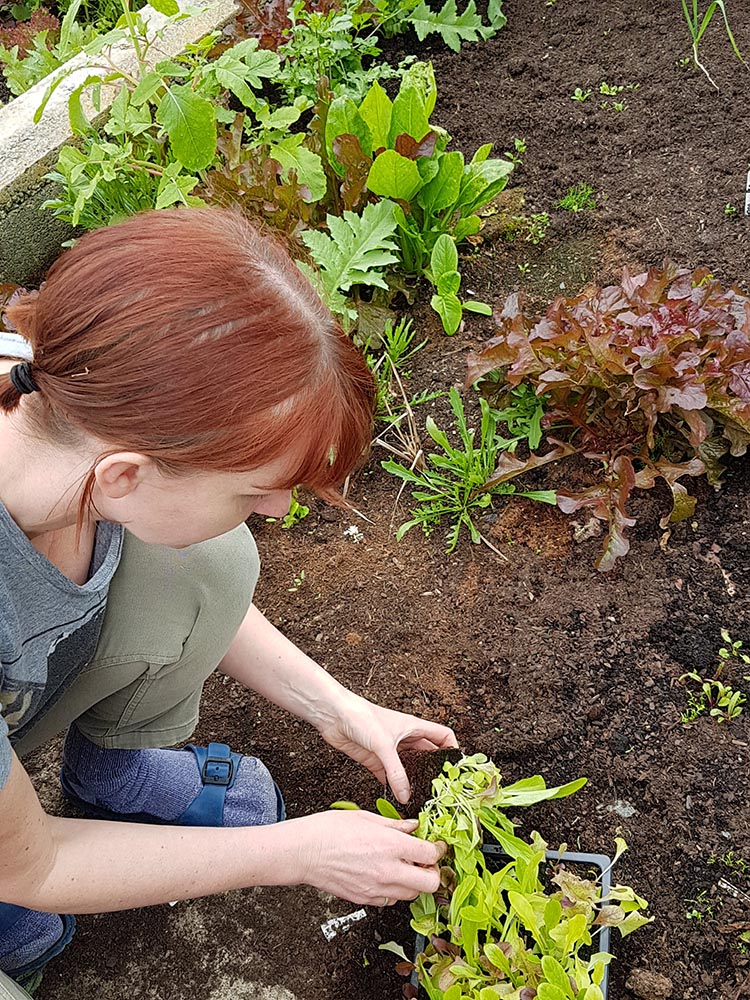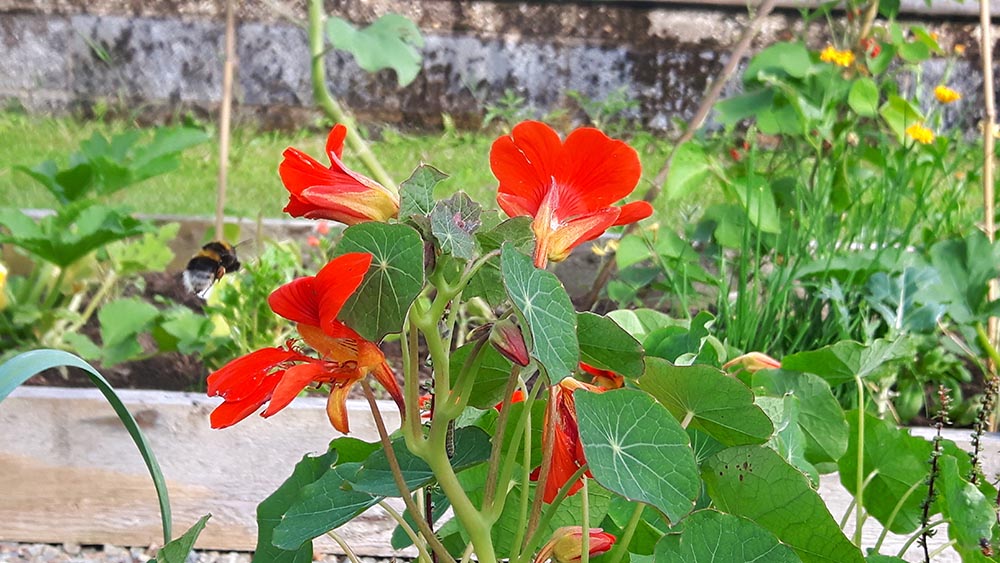Its that time of year when we are all planning what to grow on our plots. Kim Stoddart outlines her favourite produce for effective buddy planting on the veg patch…
To be perfectly honest with you, my gardens are one large mix and match, biodiverse affair. What started with experimentation into companion planting many years ago has ended with raised beds filled with many varieties of produce with barely any block planting in sight at all. I much prefer it this way. It’s harder for pests to seek out their favourite produce when it’s mingled in with less desirable others and I no longer need to think about exacting crop rotation charts at all as the soil isn’t drained of nutrients from mono-style-planting. This more free spirited approach really has an awful lot going for it, and companion planting is at its heart. It’s where I started and there are combinations that definitely afford benefit to your growing efforts all-round.
Here’s my pick of the best:
Brassica with legume
Cabbages and their ilk normally follow peas and beans in the crop rotation cycle for good reason. Yet, by planting a kale right by a French bean you are therefore cutting to the chase by tapping into the nitrogen fixing benefits of the legume in the same season. Just leave your peas and beans in the ground when they have finished producing and cut off at the stem, leaving the roots in situ to enable your slower growing brassica to tap in.
Herby delights
In my opinion no veg patch is complete without several of these plants. They bring the kitchen alive with possibility and mixed into your existing planting, their appeal is multifaceted. Not only do they help to draw pollinators in if you allow them to flower but their often delectable, pungent aroma can also help to protect their neighbours against attack. For example I always crush the leaves of fennel, basil, coriander or mint when harvesting carrots to mask the smell from the pesky carrot fly which can otherwise be drawn onto your plot.
Choose from fennel, basil, parsley, thyme, rosemary, sage and oregano. Mint and chive are also very beneficial but you might want to contain their rampant growth by placing them in pots nearby.

Sacrificial crops
Perhaps the best example of this is the planting of nasturtium in and around brassica. This way cabbage white butterflies and their very hungry caterpillars will munch their way through this plant, affording some protection to your cabbages, kale, chard or spinach. Of course if you don’t plant in blocks that will be even better but certainly nasturtium has a valuable role to play on the mixed veg patch. The leaves and flowers are also delicious in salad.
Use fillers for ground cover
Pick and come again salad leaves are particularly good for this purpose as they are quick growing and very light on the ground. As they don’t drain the soil of nutrients and can grow in even rather shallow loam, they make ideal companions in and around other produce on your patch. In the process they help to keep the soil covered, which in turn prevents it from drying out so quickly in the summer months, which means less watering for you and protection for the plants in the surrounding area.

Other produce worth considering for the purpose of ground cover includes calendula which also adds a very attractive splash of colour from its edible petals. Also, winter squash with its sprawling tendencies affords giant leaves which can be used around fruit and veg to cover the soil.
Alliums are awesome
Well, actually I’m allergic to onions but I use milder leeks, garlic and spring onion mixed in and around my fruit and vegetables. As well as helping to mask the smell of more vulnerable-to-attack produce (carrots and brassica say), garlic in particular has many added benefits besides. It can reputedly deter against aphid, spider mite and weevil infestation and certainly its smell is a deterrent to any cheeky rodents that are making a nuisance of themselves. In addition to this it is good for cleansing your patch below ground as well.
Get mix and match savvy
Otherwise, the more you can spread out the planting of produce from the same family, with lots of different varieties all mixed in together, the greater your natural biodiversity and resilience will be. For example, a bed filled will nasturtium, fennel and basil among a couple of tomato plants, peas and some kale, a few beetroot and carrots with lettuce and rocket is less likely to come under attack than a bed planted with rows upon rows of just cabbages. It’s obvious when you think about it as it’s harder for pests to find what they are looking for. Mixed planting, or polyculture, also helps attracts a wider range of pollinating insects and wildlife to the benefit of the natural balance of your plot.
This article first appeared in the September issue of Grow Your Own magazine.
